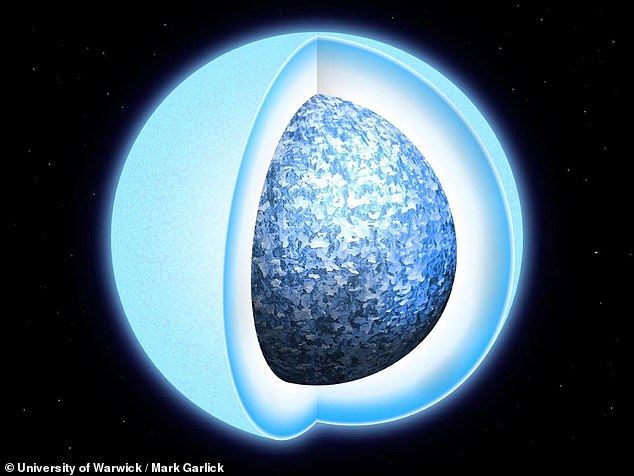Astronomers now have the 1st direct evidence that white dwarf stars form crystal cores. Our sun is destined to become a crystal white dwarf in about 10 billion years. According to the theory, the Sun will exhaust its hydrogen fuel billions of years from now and expand to become a Red Giant, followed by it shedding it’s outer layers and becoming a white dwarf. After a few more billion years of cooling, the interior will crystallize and become solid. Astronomers at the University of Warwick said this week that they now have the first direct evidence that white dwarf stars in an advanced stage of their evolution ultimately solidify into crystals.
That idea has been around for decades, but now new observations back it up. The astronomers who conducted this study said that our skies must be filled with these crystal white dwarfs. They also pointed out that long after it has swollen up as a red giant and swallowed the Earth, our sun is destined to become a crystal white dwarf, too, billions of years from now.
The study which describes these findings recently appeared in the journal Nature under the title “Core crystallization and pile-up in the cooling sequence of evolving white dwarfs.” The study was led by Pier-Emmanuel Tremblay, an assistant professor at the University of Warwick, and included multiple researchers from Warwick’s Astronomy and Astrophysics group, the Université de Montréal, and the University of North Carolina.
Current models of the Milky Way, suggesting that this galaxy alone currently contains about 10 billion white dwarfs. They are the hot, dense remnants of long-dead stars, essentially stellar cores, left behind after a star has exhausted its fuel supply and blown its bulk of gas and dust into space. These exotic objects mark the final stage of evolution for most stars in the universe, including our sun.
According to the new study, the oldest white dwarfs, nearly the age of the Milky Way galaxy itself, are likely to be almost fully crystal already. The astronomers selected 15,000 white dwarf candidates within around 300 light-years of Earth from observations made by the European Space Agency’s Gaia satellite. They then analyzed Gaia’s data on the stars’ luminosities and colours The analysis showed that white dwarfs have a core of solid oxygen and carbon. This is due, the astronomers say, to a phase transition during their lifecycle similar to water turning into ice but at much higher temperatures. The works showed these white dwarfs are likely older than previously believed. Since white dwarfs are among the oldest stars in the Universe, they are incredibly useful to astronomers. Since their lifecycle is predictable, they are used as “cosmic clocks” to estimate the age of groups of neighboring stars with a high degree of accuracy. But determining what happens to white dwarfs towards the end of their life cycle has been challenging.
Source: “Core crystallisation in evolving white dwarf stars from a pile up in the cooling sequence” (Nature)























